Announcing Blawx v1.0.0-alpha
Announcing Blawx v1.0.0-alpha
I’m very happy to announce the release of Blawx v1.0.0-alpha.
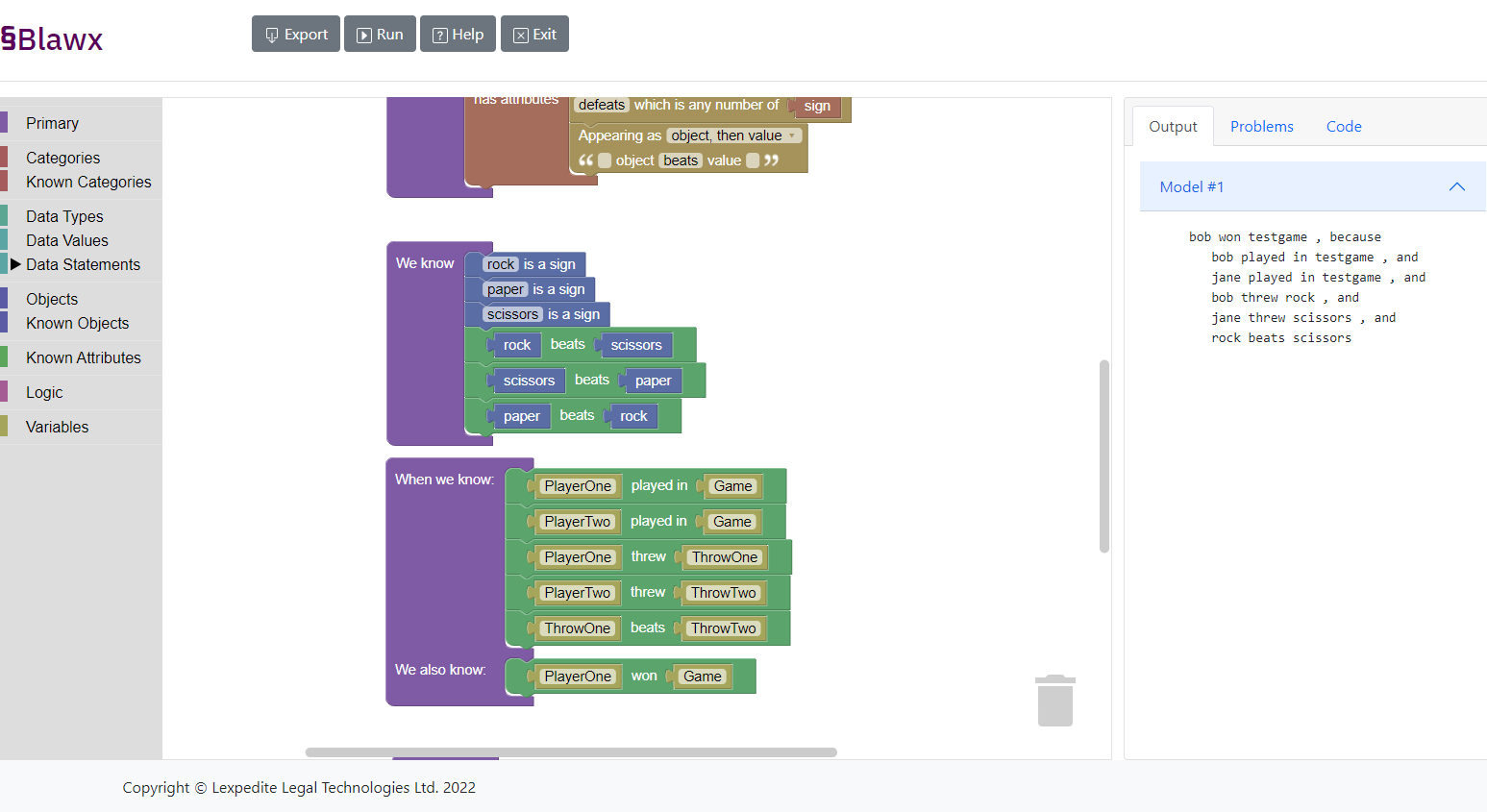
What is Blawx?
Blawx is an open source, web-based, user-friendly tool for Rules as Code. It allows you to take what you know about laws, regulations, or contracts, and describe them to the computer in a simple but powerful block-based visual language.
In September of 2020 it was awarded second place in the startup category of the American Legal Technology Awards.
What’s New in v1.0.0-alpha?
There is very little about the application that hasn’t been rebuilt from scratch, which is why we moved from version 0 to version 1. It’s still alpha software, but it is completely different alpha software.
New Reasoning Engine
Blawx v0.x was based on the Flora-2 language and reasoner. In Blawx v1.0.0-alpha, the back-end language is s(CASP), and the reasoner is SWI-Prolog running an s(CASP) library. This has the effect of expanding the sorts of questions that Blawx is capable of answering, and enables many important new features.
New and Improved Block Language
Using a new reasoner and language required revising the blocks available to the user in Blawx.
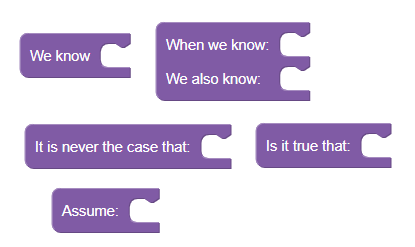
Blawx is now capable of expressing numerical constraints, logical constraints, and more. Existing blocks have also been revised to make them easier to understand.
Natural Language Explanations
The importance of being able to justify automated legal conclusions cannot be overstated. The success of the entire Rules as Code enterprise may turn on its trustworthiness, which in turn depends on independently-verifiable, legally-justified explanations for conclusions.
Blawx is now capable of not only answering your questions, but also of explaining those answers in plain English. It is also not only capable of answering why an answer was found, but unlike many similar reasoning tools it can also explain why a conclusion was not reached.
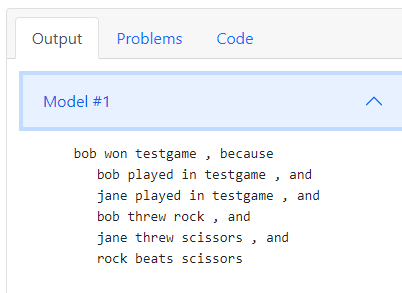
Multiple Justifications
Many tools will find a correct answer. Some tools will find all the correct answers. Blawx will find all the correct answers, and all the reasons each of those answers is correct. This is useful in legal applications to be aware of alternative methods of reaching the same legal conclusion. It is also extremely helpful as a debugging tool, whether what you are trying to debug is your encoding of the law, or the law itself.
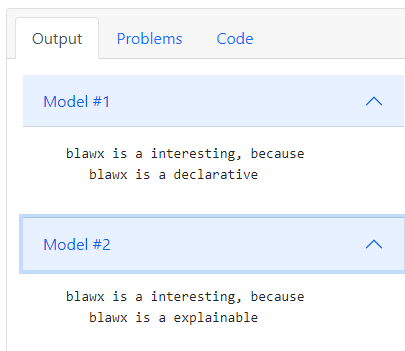
Hypothetical Reasoning
Blawx is now capable of reasoning about your rules without describing any facts. Simply use the “assume” block to specify which statements the reasoner should consider possible, and it will find hypothetical fact scenarios to answer your questions, and tell you which of the assumed inputs were relevant to those scenarios.
This feature can be used to power contingent legal advice, procedural planning tasks, finding legislative loopholes, prompting users for relevant inputs in legal expert system applications, and much, much more.
Numerical Constraints
Blawx is now capable of dealing with numerical constraints, like “the tax rate must not be higher than 0.10.” It is able to reason across multiple constraints at the same time, and combine their effects. This facilitates not only numerical reasoning, but reasoning about dates and times, and reasoning about events and their consequences over time.
Dates and events will be added to Blawx soon.
Server-Side Storage
Blawx now provides a web server with an administrative interface that allows you to manage
a database of encoded rules. When you edit rules in Blawx, they are saved to the server,
and will still be visible to you on a new device accessing that server, without the
.blawx file.
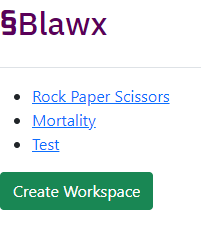
Live Code Generation
The Blawx interface will now show you the s(CASP) code that it is generating from your workspace in real-time. This feature is designed to help transition intermediate and advanced users from the visual interface of Blawx to the textual interface of s(CASP), when and if that will make them more efficient.
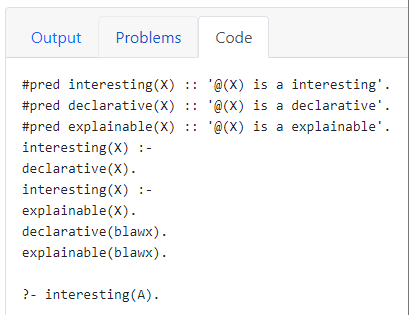
But honestly, puzzles are more fun than typing, so I’m not sure why you would switch. :)
Zero-Click Deploy to API
When you save your code in Blawx v1, you have also deployed it as a web API. No additional
work required. To use that web API in your applications, you only need to package
the relevant facts in a JSON payload, and send it to the API endpoint for your encoding.
No longer is there any need to export your .blawx file and include it in your application.
The API endpoint also provides a user-friendly interface for testing it directly.
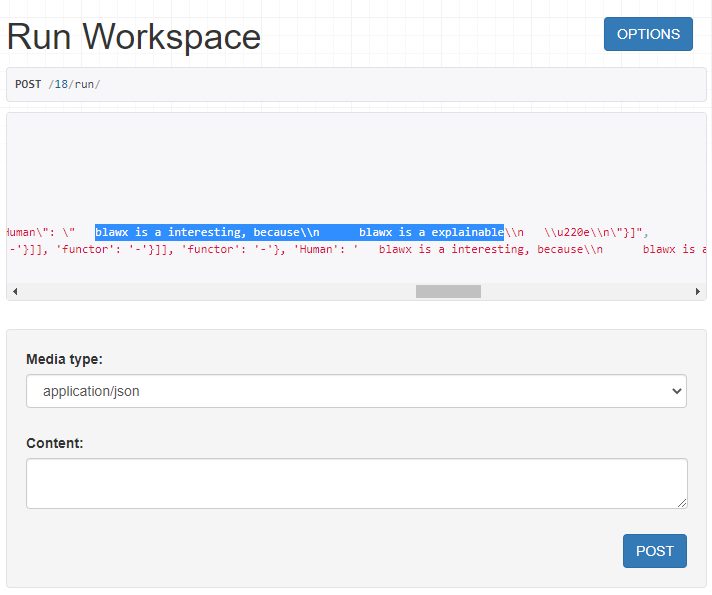
Error Messages
Error messages may not sound like any fun, but if something isn’t working, error messages are your clue as to why. Previously, Blawx did not have any error messages. Now, when something goes wrong you get some help figuring out what, and why.
Speed
Blawx now responds to most small queries almost instantly, and has massively improved performance for larger queries, in the range of 100X for some queries.
What is still to come?
Some of the things on the short-term to do list include:
- Documentation
- Examples
- Dates, and Durations
- Event Calculus
- Legal Source Text
- … and much more …
There are obviously also going to be a lot bugs to squash.
Ultimately, we are building up toward automatically generating explainable legal expert systems on the basis of a friendly encoding of a law, similar to those generated by AustLII’s DataLex tool.
Where Can I Try It?
I’m going to be deploying the new version on www.Blawx.com shortly. Later today, with any luck.
In the meantime, or if you prefer to be in an environment where strangers on the internet can’t delete your encodings, you can go to the repository and follow the installation instructions to try it yourself locally.
Thanks
This version of Blawx is only possible because of the genius and support of the people behind s(CASP), like Joaquín Arias and Gopal Gupta, the effort and willingness to help of the people behind the SWI-Prolog implementation of s(CASP), in particular Jan Wielemaker.
That it is possible is one thing. That I have been given the opportunity to prove it is thanks to my former employer, the Singapore Management University Centre for Computational Law, and my colleagues in the Benefits Delivery Modernization programme of Service Canada, and the Canada School of Public Service.
Their vision and commitment to open source has made it possible to get this far, and every step we take in open source is a lesson learned for the entire world.